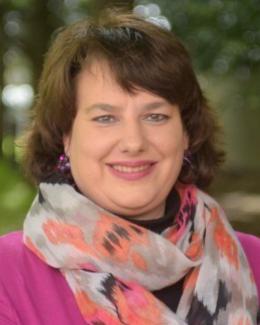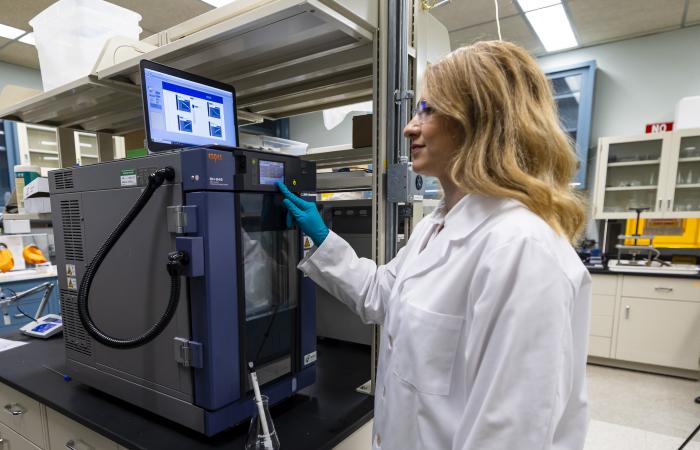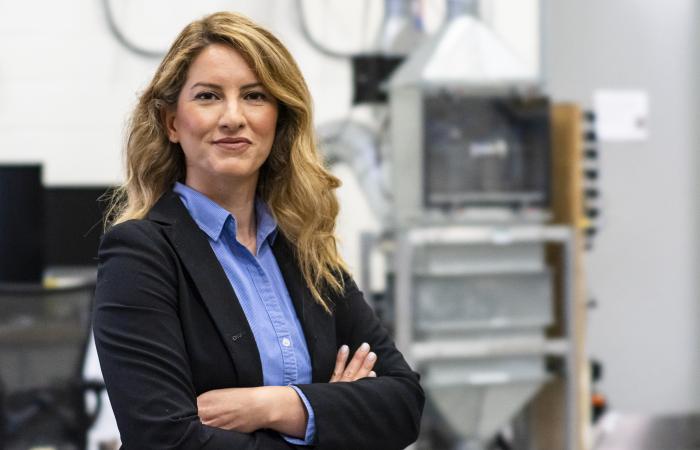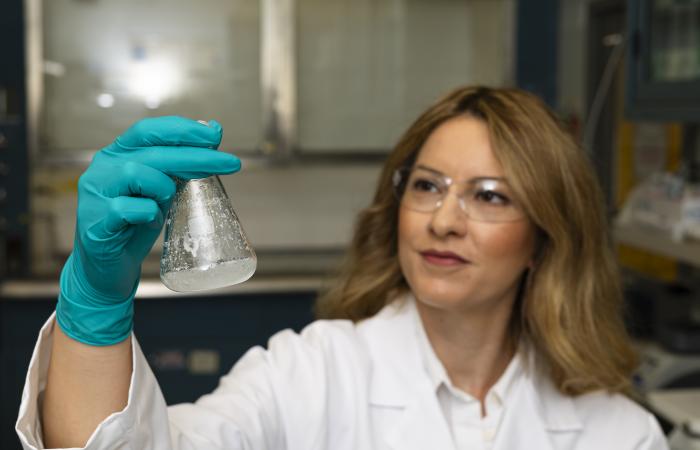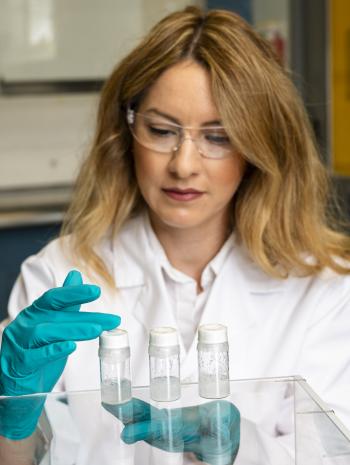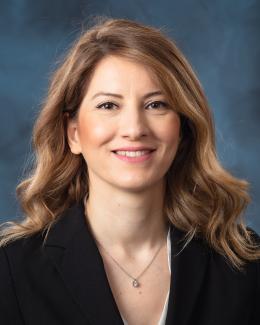The common sounds in the background of daily life – like a refrigerator’s hum, an air conditioner’s whoosh and a heat pump’s buzz – often go unnoticed. These noises, however, are the heartbeat of a healthy building and integral for comfort and convenience. As a chemical engineer and researcher at the Department of Energy’s Oak Ridge National Laboratory, Tugba Turnaoglu is tuned in to the rhythm of building equipment, not just hearing the whirs, but envisioning the liquids flowing within equipment that keep conditions cool or warm, as needed.
In her three years working within the Thermal Energy Storage and Multifunctional Equipment Integration groups, Turnaoglu has conducted experiments and studies on materials used for heating and cooling, including thermal energy storage materials, low-global warming refrigerants and the integration of novel materials such as ionic liquids into air dehumidification equipment. She is focused on the development and implementation of advanced materials to promote carbon-free and energy-efficient building technologies, specifically for heating, ventilation and air conditioning units.
“As engineers and scientists, our goal is to advance or develop more sustainable materials and technologies to overcome the environmental challenges of the 21st century,” Turnaoglu said. “These advancements can have a direct or indirect bearing on the planet, and my job is to understand how and why and to develop better alternatives.”
Exploring ionic liquids
Turnaoglu’s interest in finding environmentally friendly and energy-efficient materials gained traction as she completed her doctoral degree in chemical and petroleum engineering at the University of Kansas. It was there that she turned her research focus to ionic liquids.
To understand what ionic liquids are, Turnaoglu said to think of a saltshaker because they’re salts. However, they have larger molecules than traditional salts, making them liquid, not solid.
“Most ionic liquids don’t evaporate, and they can be designed to be environmentally benign,” she said. “This means ionic liquids can be paired with a wide range of compounds, allowing for use in various applications such as catalysis, separation and lubrication to name a few. They can be used for heating and cooling cycles, too.”
Turnaoglu’s research on ionic liquids evolved into analyzing ammonia for refrigeration.
“Pairing ammonia with an ionic liquid showed potential for use in an absorption-refrigeration cycle, a type of heating-cooling cycle,” she said. “However, to know how it would perform, I needed to understand how they interact.”
The further investigation of ammonia led to Turnaoglu performing various experiments over a wide range of temperatures and pressures. The work included some research firsts for her as well that put her on the path to ORNL. She used gravimetric microbalance, a form of accurate measurement, deploying the technique for the first time with ionic liquids and ammonia.
The ammonia research opened the door for Turnaoglu to present her findings to a national audience during the 2019 annual conference of the ASHRAE, or the American Association for Heating, Refrigeration and Air Conditioning Engineers. This was also where she caught the attention of Kyle Gluesenkamp, a scientist in building technologies at ORNL.
“When I met Kyle, he was interested in having me join his team and put my findings to work in building equipment research at the national lab,” she said.
Gluesenkamp, however, had only heard a portion of the ionic liquid potential at ASHRAE. As part of her doctoral dissertation, Turnaoglu was also studying how to pair carbon dioxide and dihydroxy alcohols with ionic liquids. Six months after the ASHRAE presentation, she received her doctoral degree with honors and finally accepted the offer to join ORNL.
Pioneering thermal energy storage
For Turnaoglu, moving to East Tennessee to work in Oak Ridge was not just a turning point professionally, but also anchored her while worlds away from her native Turkey. After graduating with her undergraduate degree from Ankara University, Turnaoglu knew that going to another country to pursue advanced studies was necessary. She first came to the United States to complete her master’s degree in chemical engineering at the University of Oklahoma.
Born into a family that stressed education, with parents who encouraged her and her siblings to earn degrees, Turnaoglu took the advice to heart and became the first engineer with a doctoral degree in her family.
“I’d like to say I am the first doctor, but I have very accomplished siblings, including one that is a medical doctor,” she said.
Turnaoglu had minimal knowledge about national labs prior to joining ORNL, but she said she was enthusiastic about future opportunities, knowing that the national laboratory environment would provide a platform for rigorous research. ORNL could also offer a platform to generate scientific outcomes that could eventually drive innovative commercial applications.
Currently, her research portfolio at ORNL is focused on developing thermal energy storage technologies and integrating them into heat pumps, something she views as critical to helping the U.S. reach its 2050 net zero carbon target, thus mitigating climate change. Heat pump technology can assist with decarbonization by reducing the need for fossil fuel-based heating and cooling systems. However, the electric load on the grid will be higher with these types of systems, and this could put increased stress on the grid and lead to failures.
“When thermal energy storage is incorporated into a heat pump, the demand can be controlled by using stored energy; this alleviates the strain on the grid and helps with decarbonization efforts,” Turnaoglu said. “Thermal energy storage also enables the storing of renewable energy, which can be intermittent.”
Recently, Turnaoglu was the sole developer of a new salt-hydrate thermal energy storage material. And it’s another first for her too: her first invention. The salt-hydrate is a phase change material, meaning it can release and absorb energy as it moves from solid to liquid forms, which is useful in heating and cooling.
“This material can efficiently store and release thermal energy at near room temperature,” she said. “I developed it for a building’s heating and cooling units, but it can also work as building insulation.”
Turnaoglu said if she had arrived in the U.S. much sooner, she could have added one more skillset to her resume.
“I might have been the first professional tennis player in my family,” she said. “I didn’t start playing until I came here, and I’ve discovered I’m quite good and I really enjoy it. I’m always learning new things, thinking creatively and beyond the conventional, and embracing the research journey. That’s what makes research captivating and enjoyable, because I’m constantly looking for those exciting discoveries.”
UT-Battelle manages ORNL for the DOE’s Office of Science, the single largest supporter of basic research in the physical sciences in the United States. The Office of Science is working to address some of the most pressing challenges of our time. For more information, please visit energy.gov/science.
